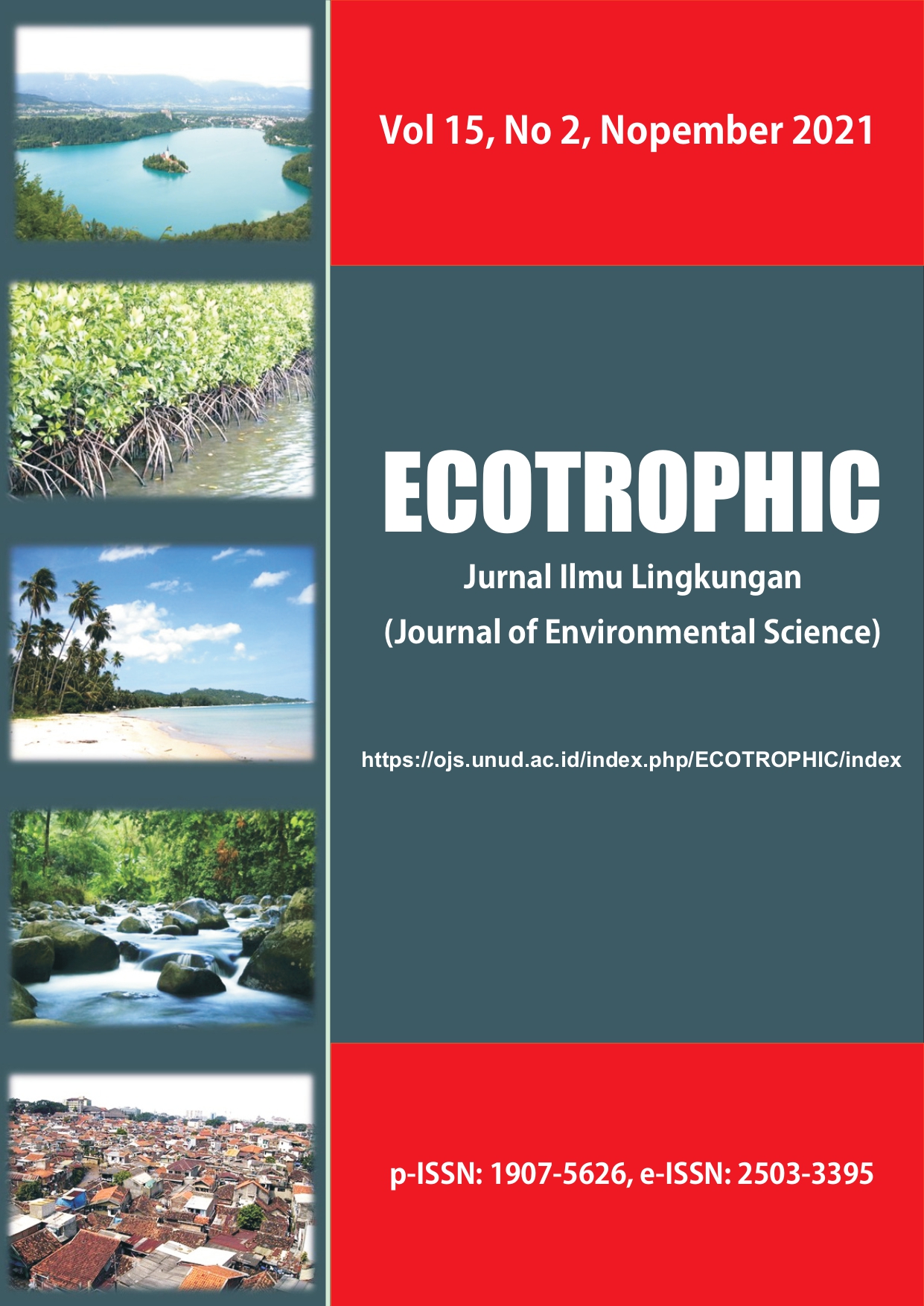ESTIMASI POTENSI KARBON SEDIMEN MANGROVE PADA HUTAN ALAM DAN HUTAN REHABILITASI DI TAMAN HUTAN RAYA NGURAH RAI BALI
Abstract
Sediments play an important role in coastal ecosystems. Apart from being a growing medium, sediment is also a place for accumulation and storage of various components including carbon. Ngurah Rai Forest Park is the largest mangrove in Bali with a large potential for sediment carbon stocks. To determine the carbon storage of mangrove sediments in natural forest and rehabilitation forest and the relationship between diameter size and vegetation type to sediment carbon in two forest types, a study was conducted using purposive sampling method based on canopy density level with three repetitions with a plot size of 10 mx. 10 meters. Sampling was divided into three depths, namely 0-30 cm, 31-60 cm and 61-100 cm. The total carbon content of mangrove sediments in natural forest is 363,491.17 Mg C or equivalent to 363,491.17 tons C and rehabilitation forest is 160,401.33 Mg C or equivalent to 160,401.33 tons C. The total sediment carbon content in Ngurah Rai Forest Park is 523,892.50 Mg C or equivalent to 523,892.50 tons C. Tree diameter had no significant effect on sediment carbon content, while vegetation type significantly affected sediment carbon content. Sonneratia alba had a significant negative effect on natural forests, while Rhizophora stylosa had a significant positive effect on rehabilitation forests. The results of the study suggest that it is necessary to maintain the preservation of mangroves and carry out rehabilitation in damaged areas. To increase the carbon content of sediments in mangrove forests, consider selecting the type of vegetation Rhizophora stylosa for the implementation of rehabilitation activities, because the type of Rhizophora stylosa makes a positive contribution to increasing the carbon content of sediments, with a note that the rehabilitation location is suitable for Rhizoporaceae species.
Keywords: Mangrove; Nature Forest; Rehabilitation; Sediment.
Downloads

This work is licensed under a Creative Commons Attribution 4.0 International License.


